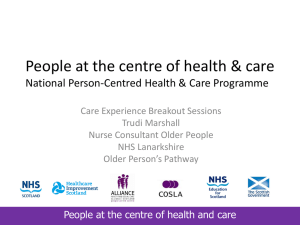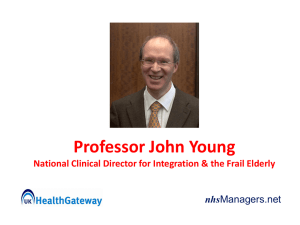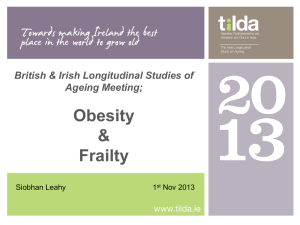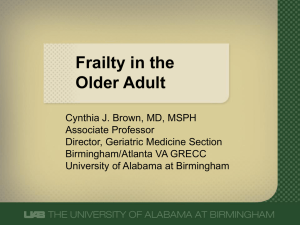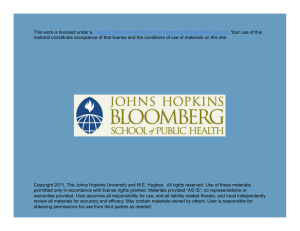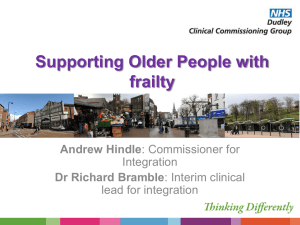echocardiographic indices associated with the phenotype of frailty
advertisement
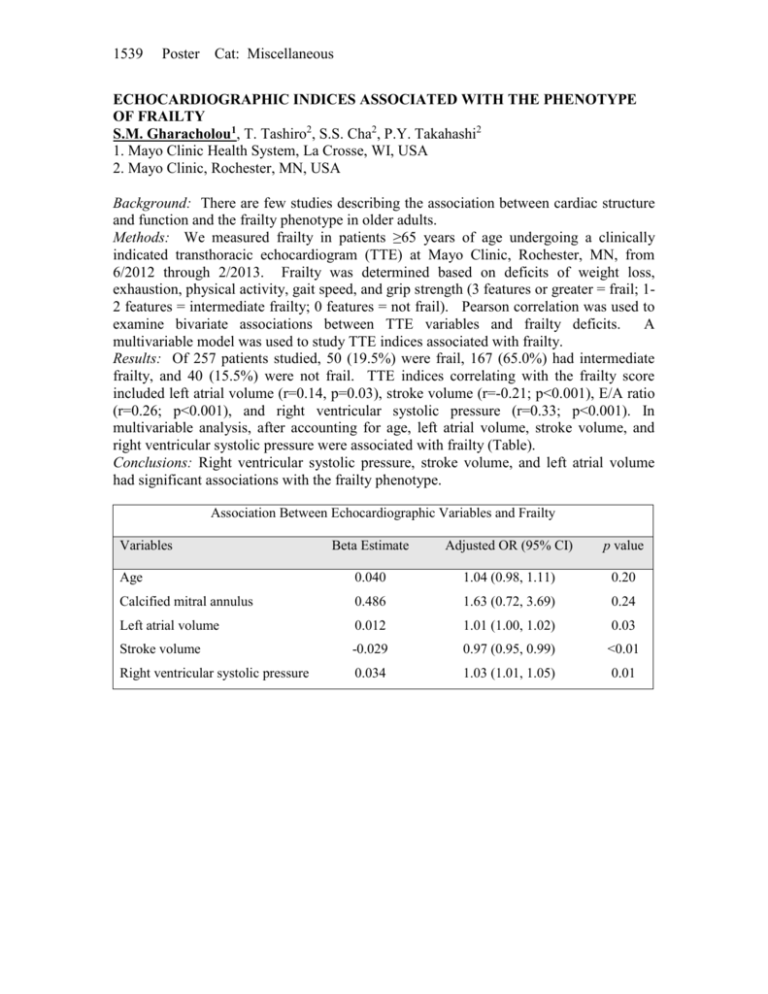
1539 Poster Cat: Miscellaneous ECHOCARDIOGRAPHIC INDICES ASSOCIATED WITH THE PHENOTYPE OF FRAILTY S.M. Gharacholou1, T. Tashiro2, S.S. Cha2, P.Y. Takahashi2 1. Mayo Clinic Health System, La Crosse, WI, USA 2. Mayo Clinic, Rochester, MN, USA Background: There are few studies describing the association between cardiac structure and function and the frailty phenotype in older adults. Methods: We measured frailty in patients ≥65 years of age undergoing a clinically indicated transthoracic echocardiogram (TTE) at Mayo Clinic, Rochester, MN, from 6/2012 through 2/2013. Frailty was determined based on deficits of weight loss, exhaustion, physical activity, gait speed, and grip strength (3 features or greater = frail; 12 features = intermediate frailty; 0 features = not frail). Pearson correlation was used to examine bivariate associations between TTE variables and frailty deficits. A multivariable model was used to study TTE indices associated with frailty. Results: Of 257 patients studied, 50 (19.5%) were frail, 167 (65.0%) had intermediate frailty, and 40 (15.5%) were not frail. TTE indices correlating with the frailty score included left atrial volume (r=0.14, p=0.03), stroke volume (r=-0.21; p<0.001), E/A ratio (r=0.26; p<0.001), and right ventricular systolic pressure (r=0.33; p<0.001). In multivariable analysis, after accounting for age, left atrial volume, stroke volume, and right ventricular systolic pressure were associated with frailty (Table). Conclusions: Right ventricular systolic pressure, stroke volume, and left atrial volume had significant associations with the frailty phenotype. Association Between Echocardiographic Variables and Frailty Variables Beta Estimate Adjusted OR (95% CI) p value Age 0.040 1.04 (0.98, 1.11) 0.20 Calcified mitral annulus 0.486 1.63 (0.72, 3.69) 0.24 Left atrial volume 0.012 1.01 (1.00, 1.02) 0.03 Stroke volume -0.029 0.97 (0.95, 0.99) <0.01 Right ventricular systolic pressure 0.034 1.03 (1.01, 1.05) 0.01
